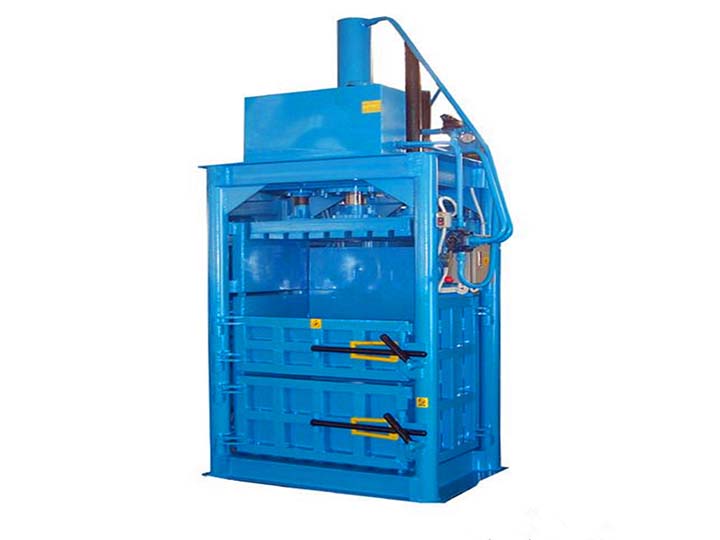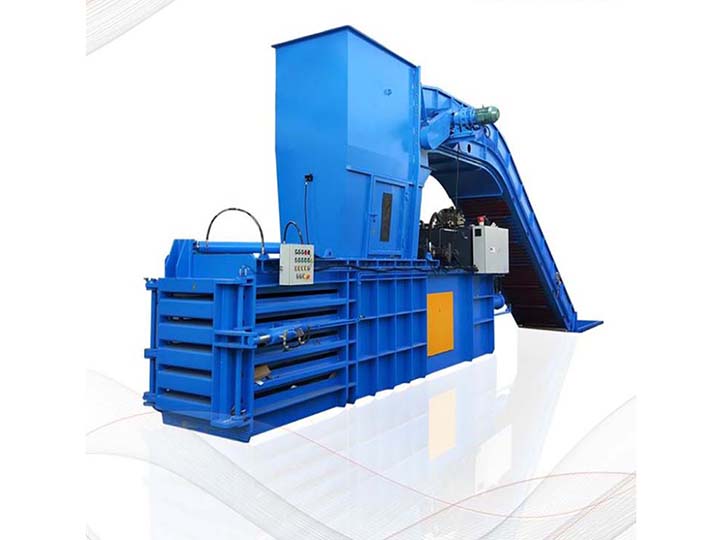Hydraulic baler is essential equipment for businesses and organizations that generate large volumes of waste materials. They are designed to compress and compact waste into uniform bales, which are easier to transport and store. There are two main types of hydraulic balers: vertical and horizontal. In this article, we will discuss the differences between these two types of balers and the advantages of each.
Vertical Hydraulic Baler
Vertical hydraulic baler is the most common type of baler and is widely used in the recycling industry. They are designed to compress and bale materials in a vertical direction, with the waste being loaded from the top. Vertical balers are typically smaller and more compact than their horizontal counterparts, making them ideal for businesses with limited space.
One of the main advantages of vertical balers is their ease of use. They are straightforward to operate, and their compact design makes them easy to move and install. Additionally, vertical balers are typically more affordable than horizontal balers, making them a cost-effective option for smaller businesses.
Vertical balers are also versatile and can be used to bale a wide variety of materials, including cardboard, paper, plastics, and textiles. They are ideal for businesses that generate moderate to high volumes of waste and have limited space for equipment.

Horizontal Hydraulic Baler
Horizontal hydraulic baler is larger and more powerful than vertical balers, making them ideal for businesses that generate high volumes of waste materials. Unlike vertical balers, horizontal balers compress materials in a horizontal direction, with the waste being loaded from the side.
One of the main advantages of horizontal balers is their ability to compress large volumes of waste materials into dense, uniform bales. This reduces the number of bales that need to be transported and stored, resulting in significant cost savings.
Horizontal balers are also more efficient than vertical balers, with higher throughput and faster cycle times. This makes them ideal for businesses that need to process large volumes of waste quickly.
Another advantage of horizontal balers is their versatility. They can be used to bale a wide variety of materials, including cardboard, plastics, metals, and even agricultural waste.
Horizontal baler is typically more expensive than vertical balers, and they require more space to operate. However, for businesses that generate high volumes of waste materials, the benefits of a horizontal baler often outweigh the initial cost and space requirements.

Choosing the Right Baler for Your Business
When choosing between a vertical and horizontal baler, there are several factors to consider. These include the volume and type of waste materials generated, available space, and budget.
For smaller businesses with limited space and moderate waste volumes, a vertical baler may be the best option. Vertical balers are affordable, easy to operate, and can handle a variety of materials.
For businesses that generate high volumes of waste materials, a horizontal baler may be the best option. Horizontal balers are larger, more powerful, and more efficient than vertical balers, making them ideal for processing large volumes of waste quickly.
Conclusion
Both vertical and horizontal hydraulic balers are essential equipment for businesses and organizations that generate waste materials. While vertical balers are more compact and affordable, horizontal balers are more powerful and efficient. The type of baler that is best for your business will depend on factors such as the volume of waste materials generated, available space, and budget. By choosing the right baler for your business, you can reduce costs, improve efficiency, and promote sustainability by facilitating the recycling process.
